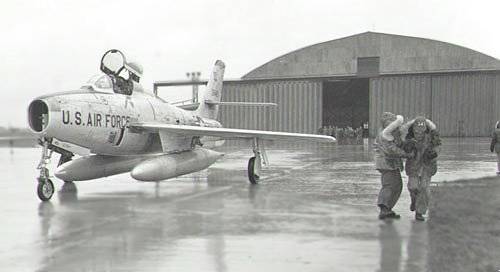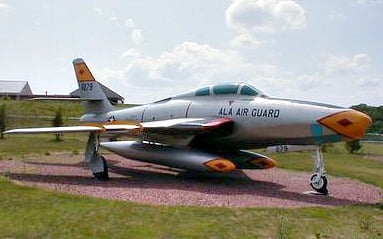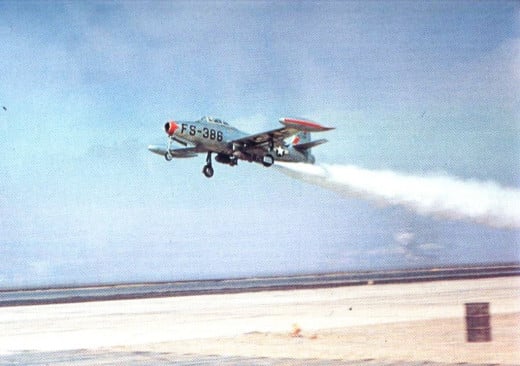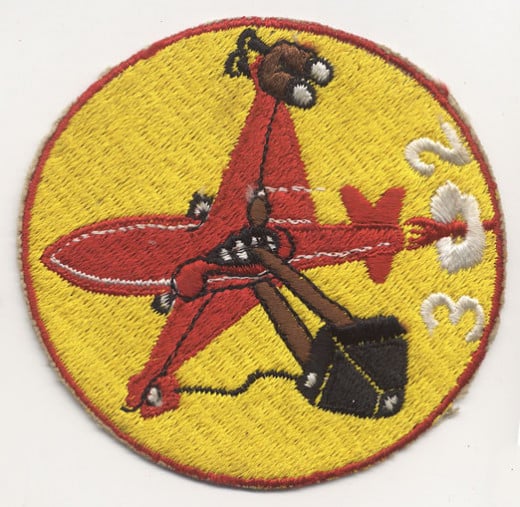Hammerin' Hank of the 302nd Tac Recon Squadron




My buddy, Hank
Henry (Hank) Hagedorn was my buddy during my stay with the 302nd Tactical Reconnaissance Squadron at the place we called “Sembatch the Air Patch.” It was really Sembach Air Base in Occupied West Germany during the days of what was known as the Cold War. The time was back in 1956 through 1959.
The "Air Patch" was not like Florida
Cold it was, but not from warring. I guess that there was never a place that saw as much cloudy and rainy weather as did that part of Germany. Rain, rain, rain. A newcomer to the base would be soaking wet like the old hands well before he was ready for such a baptism, The guy would ask, “Does it rain like this all the time?” We'd look straight at him, clothes all wet through and hat dripping big drops of water, and reply, “Nope. It surely does not always rain like this. Last year we had two days without any rain at all.”
Aerial photos - the name of the game
The main task of the 302nd was aerial reconnaissance of the places where the NATO allies held sway in Europe and North Africa. The outfit had a number of aerial surveillance aircraft, the most numerous of which had “RF84” as their designation – single engine fighter jet (F84's) equipped with large size camera equipment fixed into their airframes. The “RF” part of the type designation referred to “Reconnaissance Fighter,” for that is what they did.
An aircraft much like a snake
The “84” was a rather sneaky jet. Sort of like a snake, or maybe a big-toothed dog that had a tricky temperament. It would move on down the runway and take off all right, but once airborne, you never knew what new trick that plane would pull on you. The single jet engine that propelled the thing on its picture-making missions was prone to quit working; that is, it “flamed out” more often than pilots appreciated. Sometimes flameouts occurred at times and over places where landings could not readily be effected. That may not have mattered all that much though, for the “84” was a nose-heavy beast. When its jet engine quit jetting, there was a tendency for the aircraft to head for the earth, nose first.
Smile, Enemy. You're on candid aerial camera
The cloudy, rainy weather was not only bad flying weather, it was stinky weather in which to produce useful aerial photographs. Cameras have a tough time seeing through thick clouds. Late in the Sembach afternoons the sun might peek out a bit and the clouds would maybe lift. That was the time when the “RF84's” would roar down the runway and head out to complete whatever mission it was that had been assigned for that propitious moment. Sometimes it was midnight or so when the aircraft returned with their big film cassettes chock full of photos to be developed quickly and carried over to the waiting Intelligence Section crew.
In that old hangar was the armament section
Hank was one of the men assigned to the aircraft armament section. He and others like him took care that the “RF84's” and the other kinds of aircraft used by the outfit were properly inspected, ground tested, and ready for flying.
As you likely already know, military jet aircraft are outfitted with explosives used to fling the pilots' seats away from disabled planes; that is, to fire the seat ejection setup when asked to do so by the pilot. The plane might go down and the pilot go up or sideways, but the pilots would fare better parachuting to at least some sort of safety that way than if they were stuck inside the aircraft when it hit the ground.
If an aircraft was armed with weapons, machine guns and missiles, the armament troops were the ones who took care of those, too. The 302nd did not have bombs to sweat over, but had there been some of those kicking around, likely Hank and his companions would have taken them on, too.
The takeoff explained
Most of the time, “RF84” takeoffs were fairly straightforward. That is always to be hoped for about airplane takeoffs – straight forward – and right down the runway. With more speed, the plane would obey the laws of Nature. The air over the curved top of the wings moved faster than it did below the wings. Nature says that this causes the air pressure under the wings to be greater than that on top of the wings. Up goes the plane.
Sometimes, however, the aircraft is carrying a larger than usual load. It can take off from the runway provided it can get to a higher than ordinary takeoff speed. Runways do not stretch to longer lengths just because aircraft wanting to take off from them get heavier loads. The solution for the takeoff problem then is that the planes have to move down the same length runway much faster than they usually do.
Here's where JATO comes in
That is a problem solved by the use of an auxiliary device, a temporarily attachable extra jet engine to assist the built-in engine. It is known as a “JATO bottle" – a jet assist takeoff unit. Hank and his buddies had JATO bottles as their responsibility. If a JATO bottle were needed, they'd trundle one over to the “RF84” and bolt it on. At takeoff time, the pilot would activate his JATO and off he'd go, sort of like a cat with its tail on fire.
A Hammerin' Hank story special
There are plenty of Hank Hagedorn tales that can and should be told. Hank was a garden of tales, lots of watering and plenty of fertilizer to grow the stories were to be found in the 302nd Tac Recon Squadron. Attached as it was to its parent organization, the base boss outfit, the 66th Tactical Reconnaissance Wing, the 302nd was one of the prime movers when the Wing decided to show off to its Occupied Germany neighbors with a great big air show. You'd expect Hank Hagedorn to be right in the middle of that sort of deal, but the fact was, Sergeant Hank had the day off and was goofing off on his bunk in the barracks. He was thinking about making a run into the little farm community by the base, there to visit the local Gasthaus for a beer or two. Instead he fell into a nap – until the barracks telephone jangled him wide awake.
You should have bugged out earlier, Hank
Hank should have cut out for that beer, but he was too late. His captain had caught him with the telephone. “Get over here, Sergeant Hagedorn.” We need for you to load a JATO bottle onto the Colonel's '84.' He's going to demo a JATO liftoff for the crowd. Hurry up and get on down here to the flight line.”
Groaning with disgust, Hank zipped up his khaki fatigues, jammed one of his work caps onto his curly head, and down to the flightline about a mile distant went Hank, cussing and groaning all the way.
Hey guard, I'm here for work, not for show
At the gate to the flightline, the Air Policeman - all decked out like a poster boy in his snappy blue uniform, starched white neckerchief, brilliantly white spatz over each shiny boot – stopped Hank in his tracks. “You can't come onto the flightline dressed like that, Sergeant. If you want to get in here today you have to be in your Class-A uniform. We're having an air show.”
What Hank said in reply will not be repeated here, but it was both to the point and totally ineffective. Hank drove back to the barracks, removed the fatigues he was wearing, and donned his Class-A uniform, starched blue shirt, shiny belt buckle, heavy blue uniform jacket, and an uncomfortable necktie. He tossed the fatigues onto the car seat beside him and roared back to the flightline. Steam was still coming from beneath his collar as he charged into the armament shop, there to remove that pretty Class-A blue uniform and to crawl inside those work fatigues once again – cussing up a storm all the time, too.
Hooray for the Colonel
The Colonel's “84”roared down the runway. He hit the JATO switch. Another roar came from the JATO bottle, now activated, and jet smoke and fire belched from the thing. The Colonel's “84” took off with almost no runway space eaten, and the aircraft assumed a climbing angle of 60 degrees or better. It went like some sort of rocket. The cheering was almost as loud as the engine and the JATO noises combined.
What goes up wants to come back down again
Soon enough out of JATO fuel, the “84” reached the peak altitude allowed to the Colonel. He hit the JATO's disengage switch. Nothing happened. The “84” heeled over and now pointed toward the earth. Down it came. The Colonel managed to pull out of that dive before slamming into the ground. He flew for a short time level to the ground and came in for a soft landing. The JATO bottle was still attached to his “84.”
As Hank related to us later, “I thought it was a good idea to get on out of there before the Colonel landed. You know that he was ticked off at 'some' armament guy bolting on his JATO bottle. I thought the armament shack was no place for Hank Hagedorn to be right then."
Hank had been so angry about not only being called to the flightline for a work detail on his only day off, he explained how really ticked off he had become when he had to go back and change into his Class-A uniform and, when he got to the armament shack, to change back into his work fatigues again to be able to wrench around on a greasy aircraft.
I wrenched and I wrenched and I wrenched...
As Hank told it, “I wrenched that bolt like you would not believe. I wrenched and I wrenched and I wrenched. Each time I wrenched I cussed, and the next wrench was even harder.”
The photos
Note: The photos used with this piece were all picked up from the Internet blogs dealing with the "84's" and with Sembach Air Base back in the old days. The pictures are not the best, but beggars should never be choosers.The names of the photographers are shown.








